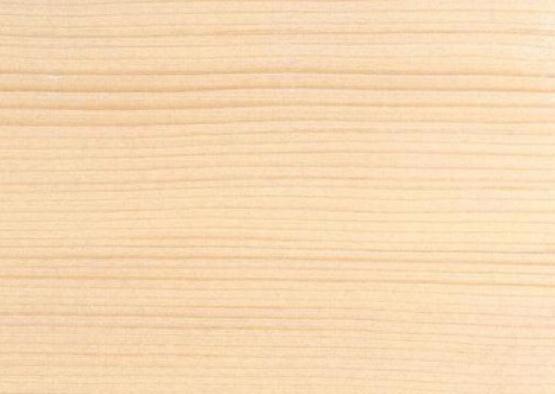Spruce-pine-fir, or SPF, is the generic name for a variety of softwood species imported from North America and used for housing construction frames.
White Spruce, Black Spruce, Jack Pine, Balsam Fir, Lodgepole Pine, Black Spruce, Engelmann Spruce, Red Spruce, SPF
Picea glauca, Picea mariana, Pinus banksiana, Abies alba

Spruce-pine-fir, or SPF, is the generic name for a range of timbers originating from North America. The eight species marketed under this name are white spruce, black spruce, jack pine, balsam fir, lodgepole pine, Engelmann spruce, and red spruce. SPF can be used for boxes, crates, and general millwork, though in Australia it is only used for housing construction frames.
There is little difference between the heartwood and sapwood, both of which are a yellowish white. It is even-grained, medium to fine-textured, and produces a lustrous finish. It is without characteristic odour or taste.
SPF glues well, is easily worked, and holds paint and nails satisfactorily. It is hard to penetrate with preservatives and is not very durable.
Shrinkage
| Very Low | Low | Medium | High | Very High | |
|---|---|---|---|---|---|

|
|||||
Tangential : |
|||||
Radial : |
2.00%
|
||||
Unit Movement Tangential: |
|||||
Unit Movement Radial: |
Strength Group

Very High |
High |
Reasonably High |
Medium High |
Medium |
Reasonably Low |
Low |
Very Low |
||
Unseasoned: |
S1 |
S2 |
S3 |
S4 |
S5 |
S6 |
S7 |
S8 |
|
|---|---|---|---|---|---|---|---|---|---|
Seasoned: |
SD1 |
SD2 |
SD3 |
SD4 |
SD5 |
SD6 |
SD7 |
SD8 |
|
 |
Stress Grade

| Structural No. 1 |
Structural No. 2 |
Structural No. 3 |
Structural No. 4 |
Structural No. 5 |
|
Unseasoned: |
|
|
|
|
|
Seasoned: |
F11 |
F8 |
F7 |
F5 |
F4 |
Density per Standard

Seasoned: |
500kg/m3
|
|---|---|
Unseasoned: |
Joint Group

Very High |
High |
Reasonably High |
Medium |
Low |
Very Low |
|
Unseasoned: |
J1 |
J2 |
J3 |
J4 |
J5 |
J6 |
|---|---|---|---|---|---|---|
Seasoned: |
JD1 |
JD2 |
JD3 |
JD4 |
JD5 |
JD6 |
 |
Colour

| White, yellow, pale straw to light brown | Pink to pink brown | Light to dark red | Brown, chocolate, mottled or streaky | |
 |
||||
Mechanical Properties
Modulus of Rupture - Unseasoned: |
|
|---|---|
Modulus of Rupture - Seasoned: |
|
Modulus of Elasticity - Unseasoned: |
|
Modulus of Elasticity - Seasoned: |
|
Maximum Crushing Strength - Unseasoned:  |
|
Maximum Crushing Strength - Seasoned: |
|
Impact - Unseasoned: |
|
Impact - Seasoned: |
|
Toughness - Unseasoned: |
Low - up to 15 Nm
|
Toughness - Seasoned: |
Low - up to 15 Nm
|
Hardness - Unseasoned: |
|
Hardness - Seasoned: |
Durability
| Low | Moderate | Reasonably High | High | |
| (0 - 5 yrs) | (5 - 15 yrs) | (15 - 25 yrs) | (more than 25 yrs) | |
In-Ground: |
 |
|||
| (0 - 7 yrs) | (7 - 15 yrs) | (15 - 40 yrs) | (More than 40 yrs) | |
Above ground: |
||||
| (0 - 20 yrs, usually < 5) | (21 - 40 yrs) | (41 - 64 yrs) | (More than 60 yrs) | |
Marine Borer Resistance: |
Lyctid Borer Susceptibility: |
|
|---|---|
Lyctid Borer Susceptibility - Other: |
|
Termite Resistance: |
Not Resistant
|
Fire Properties
Bushfire Resistance: |
Not Tested
|
|---|
SPF is soft, straight, even-grained, medium to fine-textured, and produces a lustrous finish. The heartwood is a pale yellowish white, and there is little difference between the heartwood and sapwood.
Overseas SPF is used for frames, general millwork, boxes and crates, though it is only imported into Australia for housing construction frames.
SPF is easily worked, glues well, is average in paint holding ability, and takes nails and screws satisfactorily. It is not very durable and is difficult to penetrate with preservatives.
Framing
Allied Forest Products
Australian Timber

Cusp
L.A. COST SRL
LAROS Structures Pty Ltd
Praslas Australia
RUBNER HOLZBAU Srl

